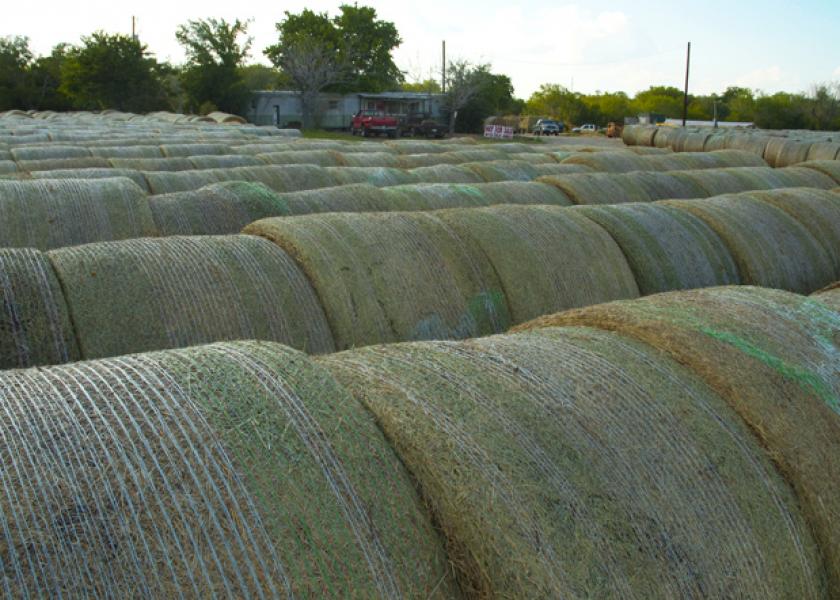Texas Producers Will Likely Hold onto Hay

Though it’s possible some Texas producers could ship hay north, it might not happen for a number of reasons.
By Robert Burns, Texas A&M University
In 2011, Midwestern producers were shipping hay to Texas as the state faced unprecedented drought and forage shortages, but don’t count on East Texas to return the favor this year as the Midwest undergoes its own drought, said a Texas AgriLife Extension Service expert.
Though it’s possible some East Texas producers could ship hay north, it might not happen for a number of reasons, said Dr. Vanessa Corriher, AgriLife Extension forage specialist.
"Anything is possible, but I’m not sure (East) Texans will be comfortable doing that even with the rain we had this year," Corriher said. "I think we’re just running a little scared."
Thanks to timely rains, much of East and North Texas had reasonably good hay production in 2012, she said.
As of July 24, about 30 East Texas counties comprised the only part of Texas not rated in either extremely dry or in one stage of drought or another, according to the U.S. Drought Monitor. Early Drought monitor reports show better moisture conditions for the Central Texas. Associated with the better conditions were some good hay yields, according to Corriher.
But though hay stocks are up, prices high – ranging from $60 to $100 per bale – and stocking rates down in parts of the state, Corriher said she expected most producers east of Interstate 45 to be cautious and hold on to what they have.
"A lot of our producers, whether they had livestock or were strictly into hay production, depleted a lot of their stocks last year," she said. "I think the attitude this year has been to rebuild those stocks – to refill those barns they emptied last year – and try to prepare themselves for winter feeding. And there’s always the potential for another extended drought in Texas."
More information on the current Texas drought and wildfire alerts can be found on the AgriLife Extension Agricultural Drought Task Force website.
For More Information
Read more about the 2012 drought.
Read more hay and forage news.







